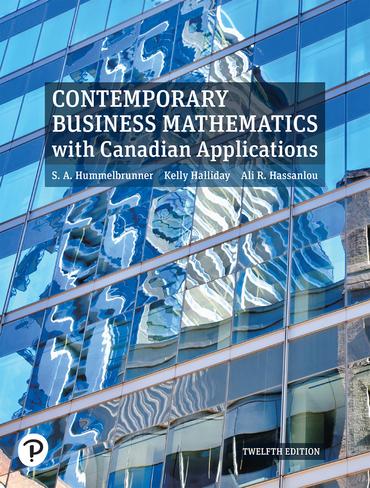Question
For this set of problems, assume you are consulting with a health insurance company called The Ninth Circle of Health. They do swab testing for
For this set of problems, assume you are consulting with a health insurance company called "The Ninth Circle of Health". They do swab testing for tobacco use and want to know how to interpret the results. From the CDC we know that 15% of adults use tobacco regularly, another 10% use occasionally, and 75% are non-users. The test the company uses has the following historic conditional probabilities: 95% positive results among regular users (in probability terms: P(+ | Regular user)=0.95), 25% positive results among occasional users, and 7% positive results among non-users. The company plans to charge higher health insurance rates to regular users; occasional and non-users will be charged the same (lower) rates.
- (4 points) Describing possible outcomes.
- What is an example of a two-way (contingency) table that shows the probability of the 6 distinct joint outcomes (level of use and test outcome). The "insides" of your table should be joint probabilities (intersections) and you should also show the total (marginal) probabilities for each category. Place the usage categories in the rows, and test result in the columns. A probability tree might help you organize the information.
- Based on this, assuming those being tested are a random sample of the population, what percentage of tests should the company expect to come back positive?
- (6 points) Assessing test results.
- What is an example of a new two-way table that shows the conditional probabilities of usage level given a certain test result. In other words: what percentage of those testing positive should the company expect are regular users? Occasional users? Non-users? What percentage of those testing negative are in each category?
- What is an example of a chart (or set of charts) in Excel that displays the probability distributions across the test results.
- Discuss these results. How confident should the company be in charging different rates based on the test results? Remember, the company only cares about regular usage in terms of prices.
- (6 points) Should we do more testing? The company is considering doing a second round of testing to improve the accuracy of the results. This will be expensive, so they want to know how much the additional information would help. Assume the second round of testing is independent, so the probabilities of testing positive based on type of user are the same as in the first round. The second round of testing only happens when the first test result is positive.
- Calculate and report the conditional probabilities of user type based on testing positive twice. What is the P(regular user | 2 positive tests)? Do the same for occasional and non-users.
- What is an example of a chart that compares the probabilities a person that tests positive twice is a regular, occasional, or a non-user to these probabilities for those that test positive when we only do one round of testing.
- Based on the probabilities, do you think it would be worth it to test everyone with a positive result twice? If they do, how should they handle the results of those that test positive one out of two times?
- (6 points) Consider the earlier example (Q1 and Q2) where we only have one round of testing. Suppose the CDC tells us that for 18 to 24-year-olds the distribution is: 7% regular users, 8% occasional users, 85% non-users. For those 45 to 64 years of age, the distribution is: 20% regular 15% occasional, 65% non-users. The conditional probabilities of testing positive based on smoking type are the same as in the initial description of the situation and do not vary by age.
- Compare the conditional probabilities to our test results. What is the probability of regular, occasional, and non-user given a positive test result for those that are 18 to 24? For those that are 45 to 64? Make a table to display these results.
- Summarize the differences in the probability distributions between the two age groups. What does this mean for the company?
- In your opinion, is it ethical for the company to consider the age of the individual when assessing how to treat test results? Discuss your reasoning.
Step by Step Solution
There are 3 Steps involved in it
Step: 1

Get Instant Access to Expert-Tailored Solutions
See step-by-step solutions with expert insights and AI powered tools for academic success
Step: 2

Step: 3

Ace Your Homework with AI
Get the answers you need in no time with our AI-driven, step-by-step assistance
Get Started


